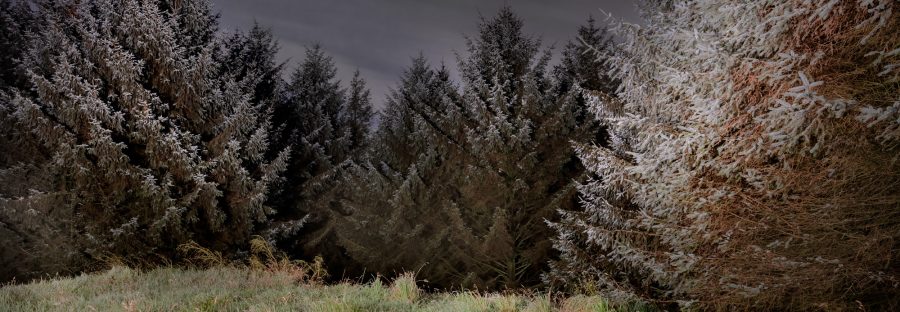Photographer’s images of the city and nature aim to capture ‘space beyond the city’
- Interview with Manchester photographer Simon Buckley
- His haunting image of landscapes and the city have captured people's imagination
- Rainstorm picture of Deansgate went viral
When I meet Simon Buckley I’m sat in my living room. In fact I have a sneaking suspicion he is sat in his too, although it is hard to tell from the portrait view on my screen
He looks jovial and happy to be there, despite having battled with technology to join the Teams call. While the pandemic has certainly ruined some things, it is reassuring to know that strangers can still meet and have a conversation, albeit in a digital space.
We immediately get to the elephant in the room, his viral picture, Rainstorm, which he snapped from Castlefield tram stop overlooking Deansgate.
“Do what you love, and the money will follow,” he laughs, acknowledging his fortunate position following the huge success of Rainstorm, which saw him having to sign hundreds of prints for clamouring buyers after the picture went up on his online shop.

He spoke very humbly about the image, almost as if he were embarrassed that he had taken it, explaining that it was really an afterthought of a shot, a small detour on his journey. But Rainstorm turned out to be a sensation and quickly spread like wildfire across the internet and in turn across the world, reaching the likes of Stephen Fry, who compared it to the work of LS Lowry.
After asking if he felt pressurised being the creator of such a famous picture, he admitted that his girlfriend had noticed a difference in his manner, one that perhaps could be felt even to this day, a year after the picture was released.
He denied that the photo had any deep meaning to him, but he appreciated that art connects to people in unforeseen ways, and that “everyone has their own emotional version of what Manchester means to them”.
However, it soom became quite clear what Manchester means to Simon, as he talked about his teenage days coming into the city for first gigs and shopping trips.
“I think the city starts to become an important part of your life before you even begin to start responding to it,” he says.
“I was actually born in Hull before moving over to Bolton as a boy, and I often wonder if I ever would’ve been a photographer if I had grown up there.”
Looking at Simon’s work it is not difficult to understand what he means. Not Quite Light, a festival of sorts he devised, celebrates the dawn and dusk over Manchester’s streets, commemorating the generations that paved the very roads we walk on today.

The concepts of inheritance, transition and time are recurring themes in his work, framing these ideas with Manchester as their canvas.
Each photograph captures a Mancunian essence, both instantly recognisable and yet enigmatic, frames of familiar streets with an indiscernible edge.
Simon jokingly admits that he’s been planning to escape the city for 30 years, and yet he is still here, using his art to push important questions and to collaborate with people across Manchester, which in turn raises the volume of debate.
He tells me that while he has excluded politics from his work in the past, he now feels emboldened to use his work to support his beliefs. Not Quite Light was itself started to emphasise the lack of public money flowing over the tarmac moat that is Swan Street and Great Ancoats Street into Northern Manchester.
Conversely, since lockdown in March, he has found himself pushed out of the city and instead into the lush green forests of Macclesfield. As part of a Not Quite Light project he calls Our Future is Ancient, he captures shots of the twilight in nature, the “space beyond the city, beyond the urban” as he puts it.
The project was meant to be finished in June, but the pandemic threw those plans into the water, and instead opened a new opportunity for Simon to expand upon his work.
The project is being developed into a book, and “hopefully” a piece of music and explores the idea of communication between trees and fungi.
He proposes that if we could speak to the trees as they do to each other, “we could tell them about our urban world, and they could teach us how to understand their natural world.”

And it is under this newfound philosophy that Simon has decided to distance himself from the less artistic elements of his career, no longer accepting commercial clients to really focus on what drives him artistically.
He has a friendly energy about him, as if you could ask any question and it would never be judged harshly, and his composure in the face of these uncertain times is comforting, especially for those of us who have been locked in our houses these last six months. Simon’s leaving thought by the end of our talk is to remain patient and sincere in what you do, as even victory can pose its challenges.
Manchester is lucky to have an artist like him documenting its streets, so that future generations may look back upon what they have inherited from us. Who knows, maybe you can be part of that picture.


